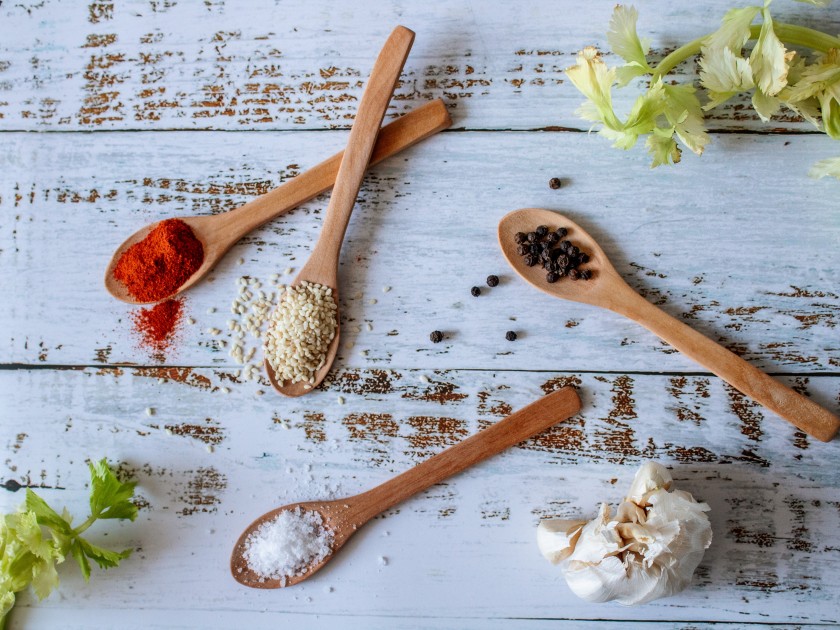
There’s nothing like fresh, warm, just-ground tahini right out of the tap. I learned this firsthand when Omri Hurwitz, a sesame seed importer, and his wife, Jackie Zitelman Hurwitz, a cofounder of a small-batch tahini company, took me to watch tahini being made from scratch.
We went to a tahini and halvah factory in Nablus, a city in the West Bank of the Palestinian territories. The factory owner, a Palestinian who kept his name to himself to avoid criticism for working with Israelis, uses seeds that have been soaked (sometimes in saltwater, which helps sink the tougher hulls), hulled, run through a centrifuge, roasted, and ground into the substance that has become such an essential part of Israeli cuisine. (After the Chinese, Israelis consume the most sesame seeds per capita in the world.)
As we watched, he held a plastic container under a metal spigot and waited as a steady stream of viscous beige liquid pooled inside. The significance of what I was seeing — the seeds imported from Ethiopia by an Israeli now being processed by a Palestinian — was not lost on me. It literally felt like peace in the making.
We drank the pure tahini from small paper cups. It coated my tongue with a richness that redefined the term “mouthfeel.”
The significance of what I was seeing — the seeds imported from Ethiopia by an Israeli now being processed by a Palestinian — was not lost on me.
Palestinians and other Arabs have been making tahini for centuries, often using methods that have been passed down from generation to generation. In East Jerusalem you can visit Al Jebrini, a nearly 150-year-old factory where tahini is ground on century-old basalt stones; these are favored for the smooth tahini they produce and the lack of sediment that more modern, industrial grindstones sometimes deposit into the finished product. In addition to the better-known tan varieties of tahini made from hulled and whole sesame seeds, a small amount of “red” tahini is sometimes available at Al Jebrini. Though ground from the same Ethiopian sesame seeds as its paler cousins, the red tahini is slow-roasted in giant ovens and stirred often. This yields its signature reddish tint.
Since antiquity, sesame has been an essential foodstuff in the Levant — the region that today includes Israel, Syria, Lebanon, Jordan, and the Palestinian territories, and beyond. Originally prized for its oil, sesame was first referenced in cuneiform tablets found in the Fertile Crescent. Herodotus wrote about sesame crops on the shores of the Tigris and Euphrates 3,500 years ago. And a thirteenth-century Iraqi cookbook, Kitab al-Tabikh, is the first place where tahini itself is referenced as a culinary ingredient.
Tahini has a unique ability to maintain its character while adapting to a wealth of dishes both savory and sweet. Silky and nutty, it can take a starring role, or play backup singer to other ingredients. Add lemon juice, garlic, salt, and ice-cold water to pure tahini paste and you get a fluffy dip that can easily eclipse hummus on a table of spreads and salads. Thin out that paste and you’ve got a creamy dressing any green leaf would welcome. But add it to caramel in a chocolate-crusted tart, drizzle it on French toast, or blend it into a smoothie with medjool dates and vanilla, and you’ll wonder why tahini isn’t used in desserts more often.
Thankfully, in recent years excellent tahini can be procured stateside, at some Middle Eastern grocers and online. Open up a tub or jar, and you’ll be surprised to discover that good imported tahini still feels miraculously warm. You may not be drinking straight from the tap, but it’s the next best thing.
Adeena Sussman is the author of Sababa: Fresh, Sunny Flavors From My Israeli Kitchen, which was named a Best Fall cookbook by The New York Times, Bon Appetit, and Food & Wine. She is currently working on her followup to Sababa, Shabbat: Recipes and Rituals From My Table To Yours. The co-author of 15 cookbooks, Adeena’s three most recent collaborations, including Cravings and Cravings: Hungry For More with Chrissy Teigen, were New York Times Best-sellers. A lifelong visitor to Israel who has been writing about that country’s food culture for almost 20 years, Adeena made Aliyah in December 2018. She cooks and writes in Tel Aviv, where she lives in the shadow of that city’s Carmel Market with her husband, Jay Shofet. You can follow her on Instagram @adeenasussman.